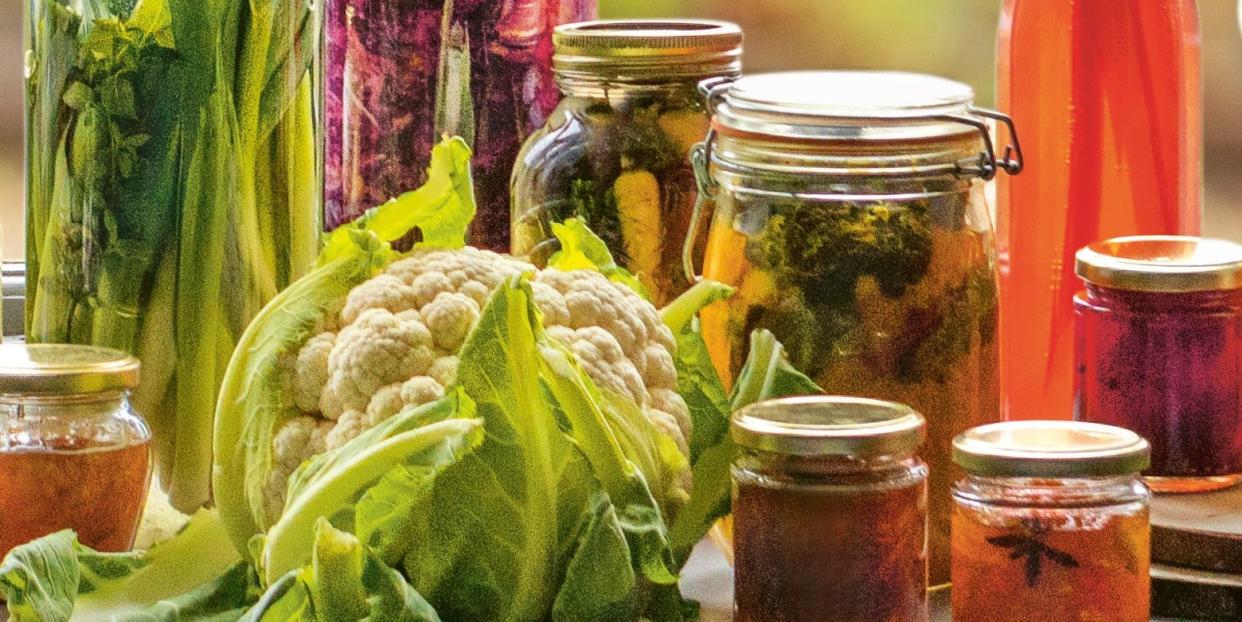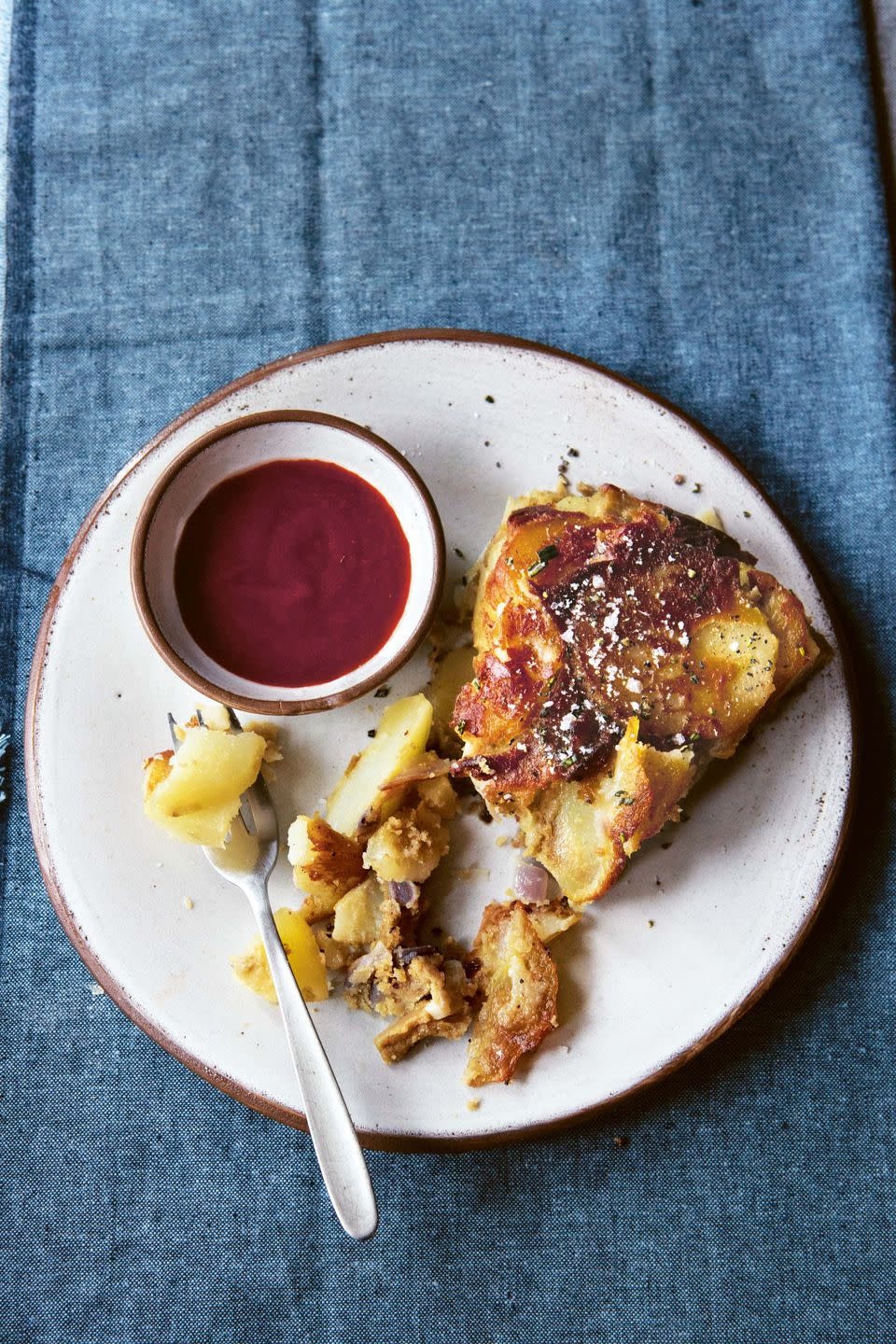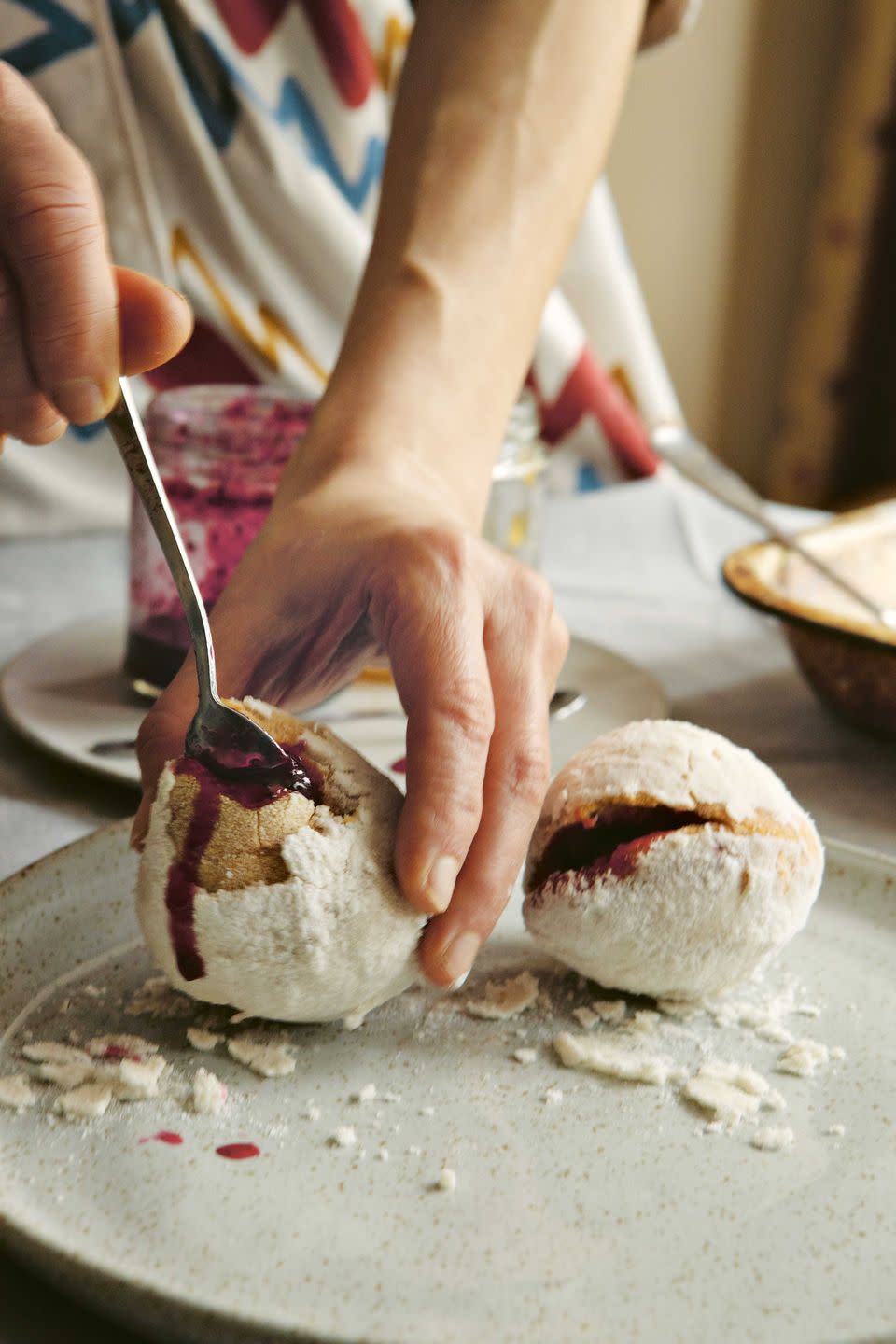Learn the craft of fermentation from an expert

Exploring one of the oldest and most useful methods of preserving food, the cookery writer Rachel de Thample has produced the 18th title in the best-selling River Cottage Handbook series, Fermentation. Having worked in the kitchens of prestigious chefs, including Marco Pierre White and Heston Blumenthal, and authored other cookbooks including Less Meat, More Veg and Gifts from the Modern Larder, de Thample has a wealth of culinary expertise to share. Here, she shows readers how with just yeast, bacteria and salt (plus that all-important ingredient, time), you can produce both delicious and nutritious food.
From kombucha cheesecake to wild gooseberry fizz and honey-fermented carrot jam, the book features a variety of tempting recipes, including drinks, sweet treats, sourdoughs and preserves, all accompanied by step-by-step photographs, alongside an easy-to-follow explanation of the basics of fermentation. As a low-tech process that requires just a few simple guidelines – and not an abundance of expensive equipment – this is a great new cookery skill to learn as the cooler weather draws in.
Here, we share two of our favourite recipes from the book:
Fermented ketchup

This is gorgeous and ridiculously simple – as well as being a great probiotic ingredient that children are likely to fall for. I often base my recipe on shop-bought organic tomato purée, but when I’ve got a glut of tomatoes I make my own purée – by roasting, blending and passing the tomatoes through a sieve, then cooking the mixture down until it’s quite thick. One advantage to this is that I can roast nectarines, peaches, apricots, cherries, rhubarb, raspberries or any other summer fruit along with, or instead of, the tomatoes and use the resulting purée in the recipe below.
Makes 250g
Ingredients
150g tomato purée
1 garlic clove, very finely chopped
2 tbsp brine from a lacto-fermented pickle or sauerkraut
1 tbsp raw cider vinegar
1 tbsp blackstrap molasses or maple syrup
1⁄2 tsp sea salt
1⁄4 tsp tamari or soy sauce
A pinch of ground allspice or cinnamon
You will also need
A 200g jar with airtight lid
Fermentation time
2–3 days
Method
Combine all the ingredients in the jar and stir thoroughly until well combined. If the jar is not full to the top, add a pinch of salt and enough water to come right up to the rim of the jar. Secure with a lid.
Leave to ferment at room temperature for two to three days, checking and stirring daily. Then transfer the ketchup to the fridge where it will keep for a month.
Sourdoughnuts

I make no apology for including a recipe for these deep-fried sourdough treats – there’s nothing wrong with an occasional indulgence! Fermenting isn’t purely about being healthy, it’s also about creating flavour, and these doughnuts score pretty highly on that count. They’re also amazingly light and fluffy.
Makes 8–12
Ingredients
For the dough
250g active white sourdough starter
250ml warm whole milk
500g strong white bread flour, plus extra for dusting
2 tbsp melted butter
2 tbsp raw, organic caster sugar
1 tsp sea salt
2 large eggs, lightly beaten
For deep-frying
1 litre rapeseed or sunflower oil
For chocolate-glazed doughnuts
100ml single cream
1 tbsp melted butter
100g dark chocolate, finely chopped
For icing-glazed doughnuts
2–3 tbsp warm whole milk
100g icing sugar
For jam-filled doughnuts
1 tbsp jam per doughnut
100g icing sugar
You will also need
7cm plain round cutter
3cm round cutter (for ring doughnuts only)
Fermentation time
8–12 hours, or overnight
Proving time
1 hour, plus 30 minutes
Method
In a large bowl, mix the sourdough starter with the warm milk, flour, melted butter, sugar, salt and beaten eggs to form a smooth dough.
Turn out onto a floured surface and knead well for five to 10 minutes until the dough is stretchy. Transfer to a bowl, cover with a damp cloth and leave to rise at room temperature for eight to 12 hours or overnight, until doubled in size.
Tip the dough out onto a well-floured surface and pat or gently roll out to a one-centimetre thickness.
Use a seven-centimetre cutter to stamp out rounds. Reroll the trimmings to cut more doughnuts.
Cover the doughnuts loosely with a tea towel and leave to prove in a warm place for about an hour until almost doubled in size. When you press the dough gently with a finger, it should bounce back.
For jam-filled doughnuts, leave the rounds whole. If you fancy glazed doughnuts with holes, cut out three-centimetre holes from the centres (you can fry these, too). Transfer the doughnuts to a floured baking tray or board and cover with a clean tea towel. Leave to rise in a warm place for 30 minutes.
Meanwhile, prepare your chosen glaze or filling.
For chocolate-glazed doughnuts, pour the cream into a pan and gently heat to just below the boil. Put the butter and chocolate into a bowl, pour on the warm cream and stir until melted and smooth.
For icing-glazed doughnuts, whisk the warm milk and icing sugar together until you have a smooth glaze the consistency of single cream – it should coat the back of a spoon.
For jam doughnuts, put the jam in a bowl and stir to soften it if necessary. Sift the icing sugar into a dish.
Heat the oil in a deep-fat fryer or large, heavy saucepan to 190°C (or until a small piece of dough – cut from a ring doughnut, for example – dropped into the hot oil turns golden in 15 seconds).
Deep-fry the doughnuts, one by one, for about two minutes each, until golden. Use a slotted spoon or tongs to turn them in the oil and to safely remove them once cooked. Transfer to a plate lined with kitchen paper or a wire rack to drain.
Glaze or fill the cooked doughnuts while they are still warm. With ring doughnuts, dip one side of each into the chocolate or icing glaze to coat generously, then place on a board and leave to set before eating. With whole doughnuts, use the end of a teaspoon to poke a hole in the side then use the spoon to gently ease two to three teaspoonfuls of jam into each one. Roll the filled doughnut in icing sugar until well coated and leave to cool before eating.
‘River Cottage Handbook No 18: Fermentation’ (£16.99, Bloomsbury) is available now via Amazon.

 Yahoo News
Yahoo News 
